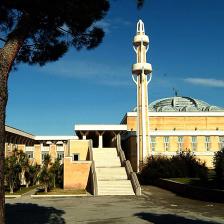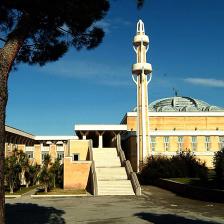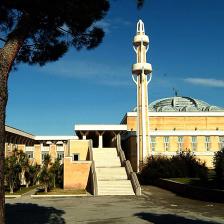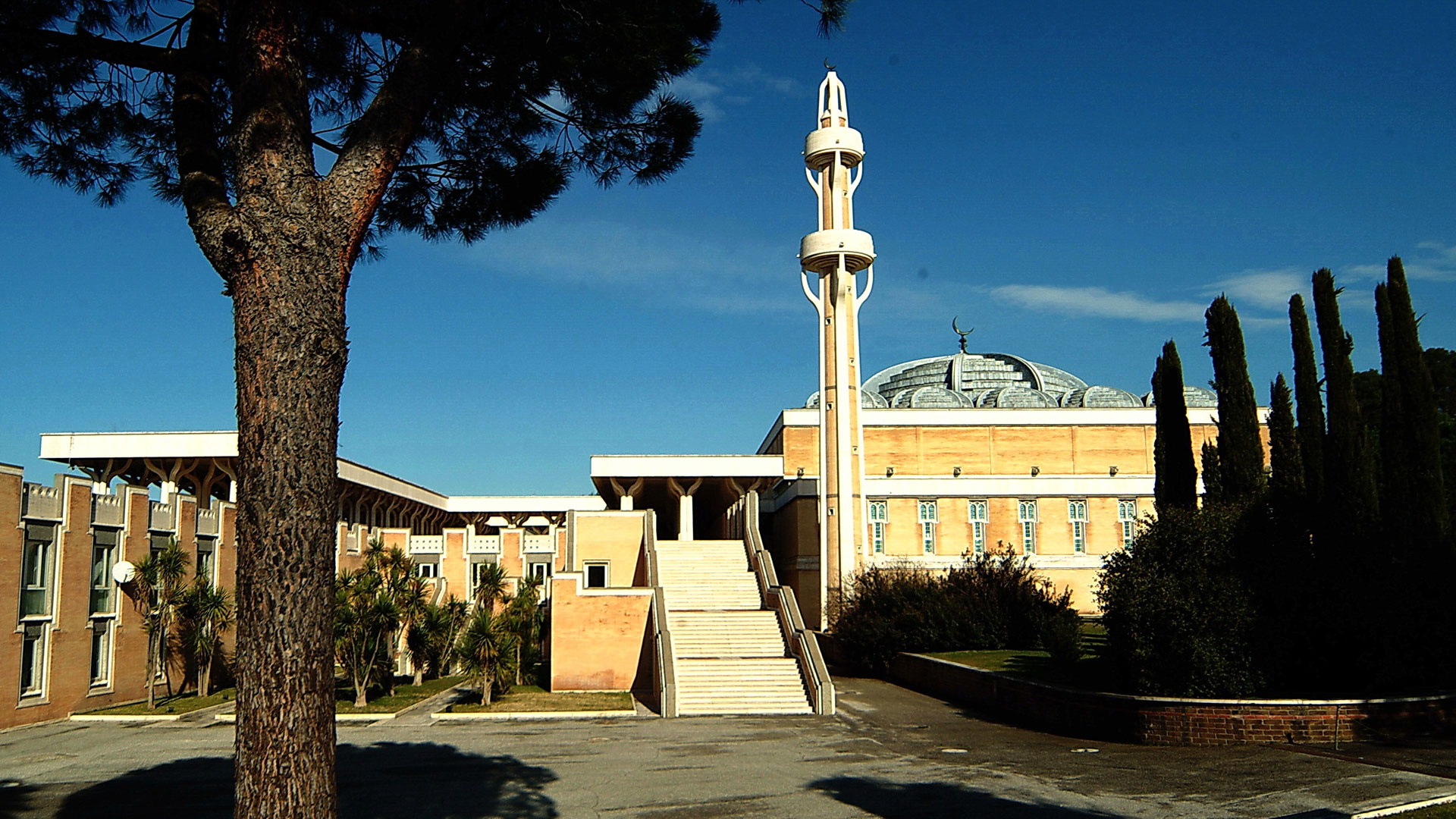
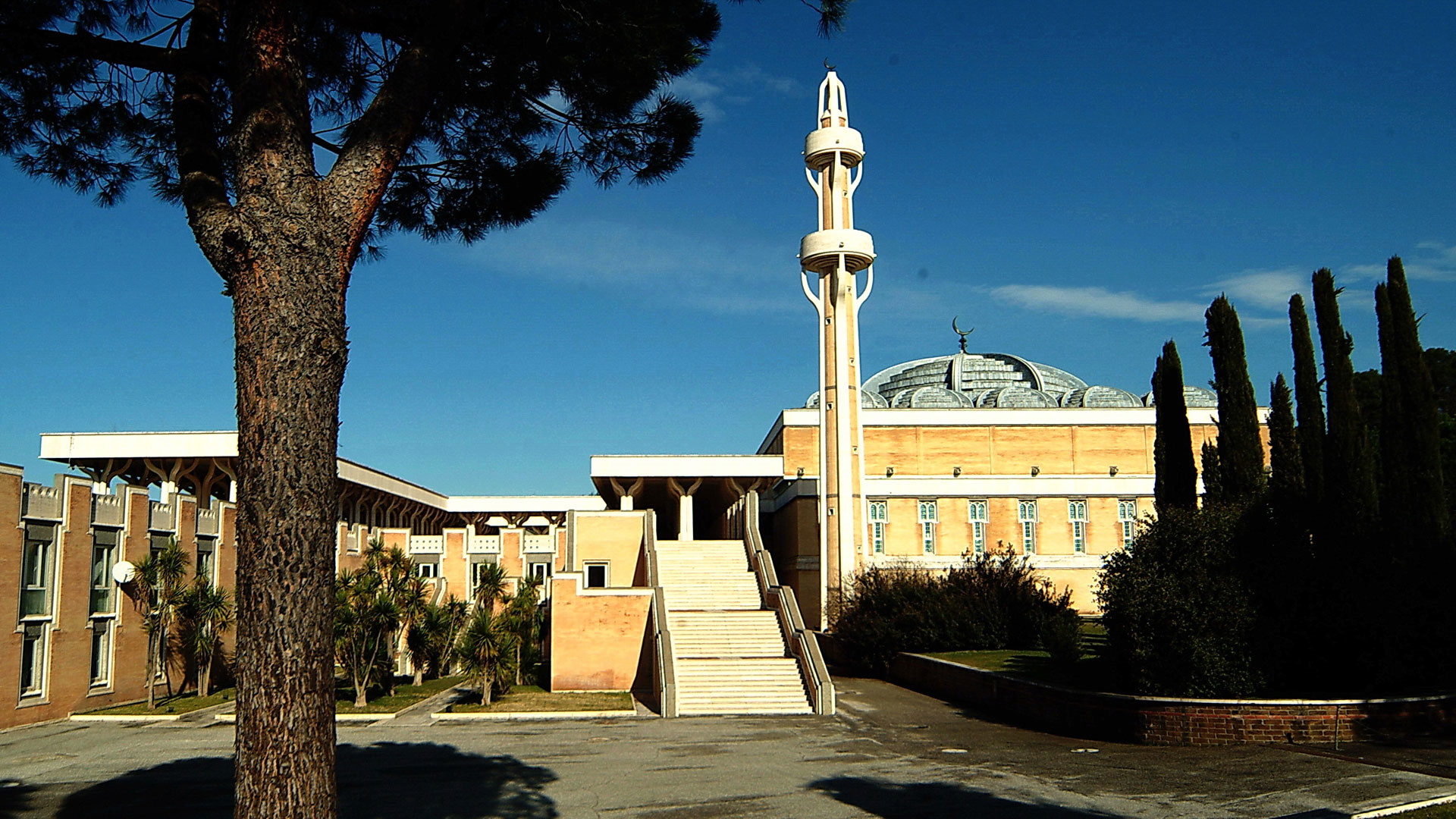
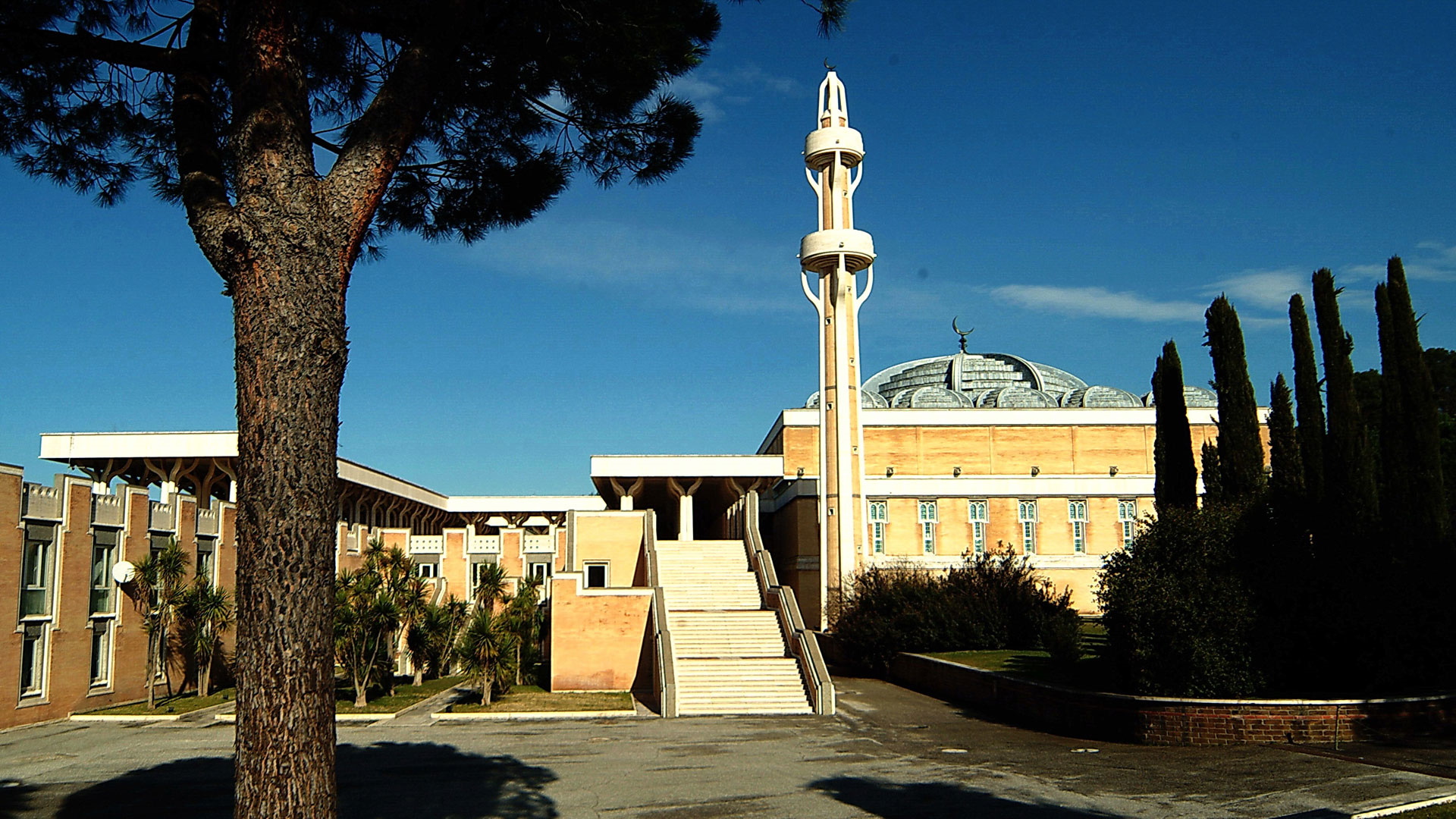
Rome has had, since ancient times and subsequently, over the course of the various centuries, numerous links with the Eastern world, of an economic, commercial, political, social and cultural nature.
These mutual and lasting influences have left a deep imprinting on the physiognomy of the city and, even today, there are many historical-archaeological testimonies present in the area.
First Part: The places of worship
Among the main oriental places of worship in Rome, we first of all mention the Tempio Maggiore (the Great Temple), the most important synagogue in the city, as well as one of the largest in Europe. Built on one of the four plots of land obtained from the demolition of the most run-down areas of the Ghetto, the synagogue was inaugurated in 1904. It is a massive and large building, with a square base, surmounted by an imposing mass in an eclectic style inspired in Assyro-Babylonian forms. The basement houses the rich Museum of the Jewish community of Rome and the Spanish Temple, a small building fitted out with part of the furnishings from the "five scole", the synagogues in the old Ghetto: the Castigliana, the Catalana, the Siciliana, the Nova and the Italian.
Another important oriental place of worship in the capital is certainly the Mosque. Inaugurated in 1995, it stands in the northern area of the city at the foot of the Monti Parioli, perfectly integrated with the surrounding greenery and is the seat of the Islamic Cultural Center of Italy. It is the main place of worship of the Muslim community in Rome and the largest in Europe. Built to a design by the architect Paolo Portoghesi, assisted by the engineer Vittorio Gigliotti and the Iraqi architect Sami Moussawi, it represents a synthesis between Islamic, Italian architecture and the local Roman tradition.
There are also two Buddhist temples of the Chinese community, the Hua Yi Si temple (literally Hua = China, Yi = Italy, Si = temple), and the Putuoshan temple on the Esquiline. The first was built thanks to the offerings of the Chinese population and donations from China and Taiwan, the place of origin of the temple masters, inspired by the imposing structure of Chuang Tai. The shape of the temple is the typical Chinese "pagoda" style, a style not native to China but the result of foreign influence on Chinese architecture. In fact, the pagoda represents an evolution of the Indian Buddhist stupa, a monument in which the relics of the Buddha and sacred religious objects were kept. In the front courtyard, as per tradition, there is a statue of a lion, a symbol of protection and strength; just inside we find the statue of the smiling Buddha, the Bodhisattva Maitreya. The second is known as the "Small Temple" or "Putushan Temple" as it was founded by Chinese from Putuo Island.
Less numerous and little known are the Hindu and Sikh temples, widespread above all in the Roman suburbs where the communities are more present. Worth noting are the Om Hindu Mandir (Om "universe", a whole that relates to the cosmos and the Mandir the "house" of prayer) of Torpignattara and the Sikh Temple of Anagnina in Rome.
Second part: Libraries and Cultural Institutes
Among the most important libraries with texts in oriental languages in Rome we can mention the Library of Oriental Studies of the "La Sapienza" University which belongs to the Department of the Italian Institute of Oriental Studies - ISO and boasts a considerable number of book collections, belonging to teachers who, since the establishment of the Oriental School (1904), they have alternated in the different teachings; the library also includes a Media Library, which mainly collects DVD films of oriental cinema, but also music CDs and other multimedia material. Also relevant is the Oriental Collection of the National Central Library, made up of four separate funds, which arrived at different times and in different ways, but which currently constitute an important and unique book heritage within Italian libraries: the Arabian fund, the Chinese fund, the Japanese fund and the Slavic fund. Finally, another conspicuous fund is made up of the Library of the Pontifical Oriental Institute, one of the most authoritative and large collections of the Eastern Catholic and Orthodox Churches, which has more than 200,000 volumes.
As far as Cultural Institutes are concerned, we recall the PISAI - Pontifical Institute of Arabian and Islamic Studies, founded by the Missionaries of Africa Society (White Fathers) in 1926, which is a study and research center whose activities didactic and scientific prepare for an informed theological dialogue with Muslims. The training that PISAI has been dispensing for over 50 years, for the achievement of the Licentiate and Doctorate in Arabic and Islamic Studies, is based on the in-depth study of the Arabic language and Islamic sciences. PISAI includes a library of about 40,000 volumes. Also within the Near and Middle East, there is the Cultural Institute of Iran, active for over half a century as a representative of Iranian cultural institutions in promoting cultural and academic relations between the two nations, with the aim of deepening the development of their cultural and scientific relationships. The institute organizes Persian language courses and includes a library that boasts over 3,000 volumes, in particular texts of Persian language and literature. We also recall the ISAS - International Institute of South Asian Studies, which promotes the knowledge and enhancement of the cultural heritage of South Asia, India in particular. The institute organizes seminars, conferences, book presentations, art and photography exhibitions, film and documentary screenings, study trips, dance and music performances and courses in Southeast Asian languages.
Finally, we cannot fail to mention the Confucius Institute and the Japanese Institute of Culture. The first, established in Rome in 2006 thanks to the Department of the Italian Institute of Oriental Studies (ISO), in collaboration with the University of Foreign Languages of Beijing (BFSU) which was the first Confucius Institute founded in Italy and the second in Europe, with the aim of promoting cultural exchanges between the two countries and organizing cultural activities, conferences, exhibitions and shows. The Institute is the venue for the international HSK (Chinese Proficiency Test) and HSKK (HSK Speaking Test) linguistic proficiency exams.
The Japanese Institute of Culture, on the other hand, inaugurated in 1962 to promote Japanese culture in Italy, depends on The Japan Foundation in Tokyo. It organizes Japanese language courses divided into different levels (beginner, elementary, pre-intermediate, intermediate) whose final exam, (Nihongo Nôryoku Shiken) supervised by the Japan Foundation and the Association of International Education, issues a certificate of knowledge of the Japanese language officially recognized. The library houses over 32,000 volumes, more than one hundred active magazines, a collection of about 2,500 microfilms, a collection of traditional and modern Japanese music for learning the language.
Third Part: Art and Museums
Rome is a city rich in oriental art, monuments and museums; among these the most famous monument is the Pyramid Cestia of the praetor and tribune of the plebs Gaius Cestius. Fruit of the Egyptianizing fashion that developed in the capital of the ancient world after the conquest of Egypt by Octavian in 31 BC, the tomb was built along the Via Ostiense between 18 and 12 BC. Four centuries later, on the initiative of the emperor Aurelian, it was incorporated into the new city walls.
Among the oriental art museums, first of all we mention the Giuseppe Tucci Museum of Oriental Art, which is part of the MuCiv - Museo delle Civiltà (Civilizations Museum). The museum, named after Giuseppe Tucci (1894-1984), one of the greatest orientalists of the twentieth century, has been transferred from the historic site of Palazzo Brancaccio in Via Merulana to the Eur in the Palazzo delle Scienze. The collection was formed with state purchases, exchanges, donations and with artifacts and art objects brought back by the archaeological missions of ISMEO (Italian Institute for the Middle and Far East), today IsIAO, (Italian Institute for Africa and the Orient), in Iran, Afghanistan, Pakistan. The permanent exhibition is divided into the sections: Ancient Near and Middle East, India, Gandhara, Tibet - materials among the most important in the world - and Nepal, South-Eastern Asia and the Far East.
Another important museum is the Barracco, made up of a wonderful collection of ancient sculptures - Assyrian, Egyptian, Cypriot, Phoenician, Etruscan and Greco-Roman art - which Giovanni Barracco, a rich Calabrian gentleman, donated to the Municipality of Rome in 1904. Above all the art of the Ancient Near and Middle East is widely documented: Egyptian art is represented starting from the most ancient dynasties (3,000 BC) up to the Roman era. From Mesopotamia instead come the precious Assyrian slabs, wall ornament of the palaces of Ashurbanipal in Nineveh and Senacherib in Nirmud, from the 7th and 6th centuries BC. Finally, the art of the Roman provinces of the East is present with three slabs from Palmyra, the famous Syrian caravan city which had its maximum splendor in the second century. AC.
Among other lesser known museums concerning ancient oriental art we point out the Museum of the Near East, Egypt and Mesopotamia which is part of the Museum Complex of the La Sapienza University, created as evidence of the results obtained in the field by more than thirty archaeological missions of the Sapienza in fifteen different countries of the Near East, the Mediterranean and Africa during more than fifty years and which has over four thousand archaeological finds.
Finally, we recall the Academy of Egypt which houses "The Mysterious discovery of the Tomb of Tutankhamun", a spectacular permanent exhibition with exact 1:1 scale replicas of the archaeological finds as they were found by Howard Carter in 1922.
Große Synagoge von Rom (Tempio Maggiore)
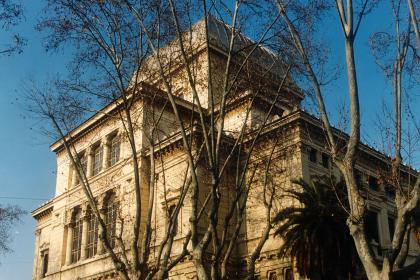
 Condividi
Condividi
Jewish Museum of Rome
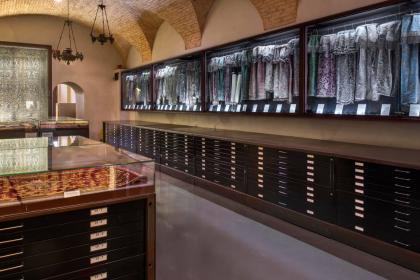
 Condividi
Condividi
Die Moschee von Rom
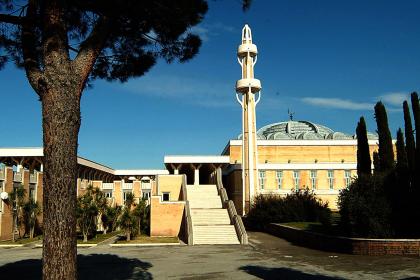
 Condividi
Condividi
Cestius-Pyramide
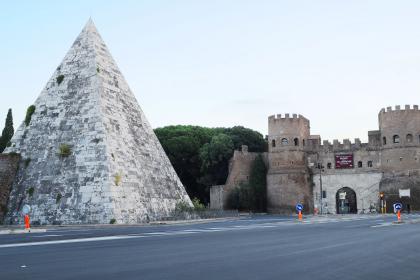
 Condividi
Condividi
MuCiv - Museum der Zivilisationen
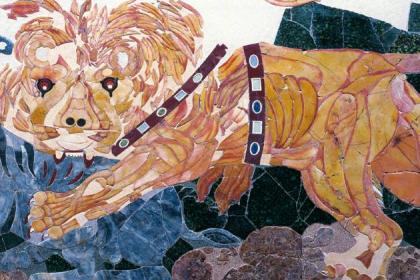
 Condividi
Condividi
Museum Antiker Skulpturen Giovanni Barracco
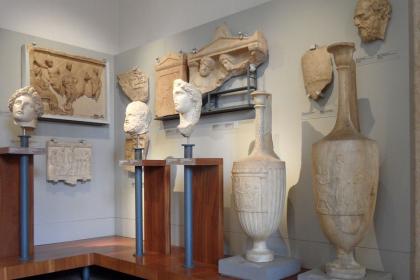
 Condividi
Condividi
 Condividi
Condividi













































